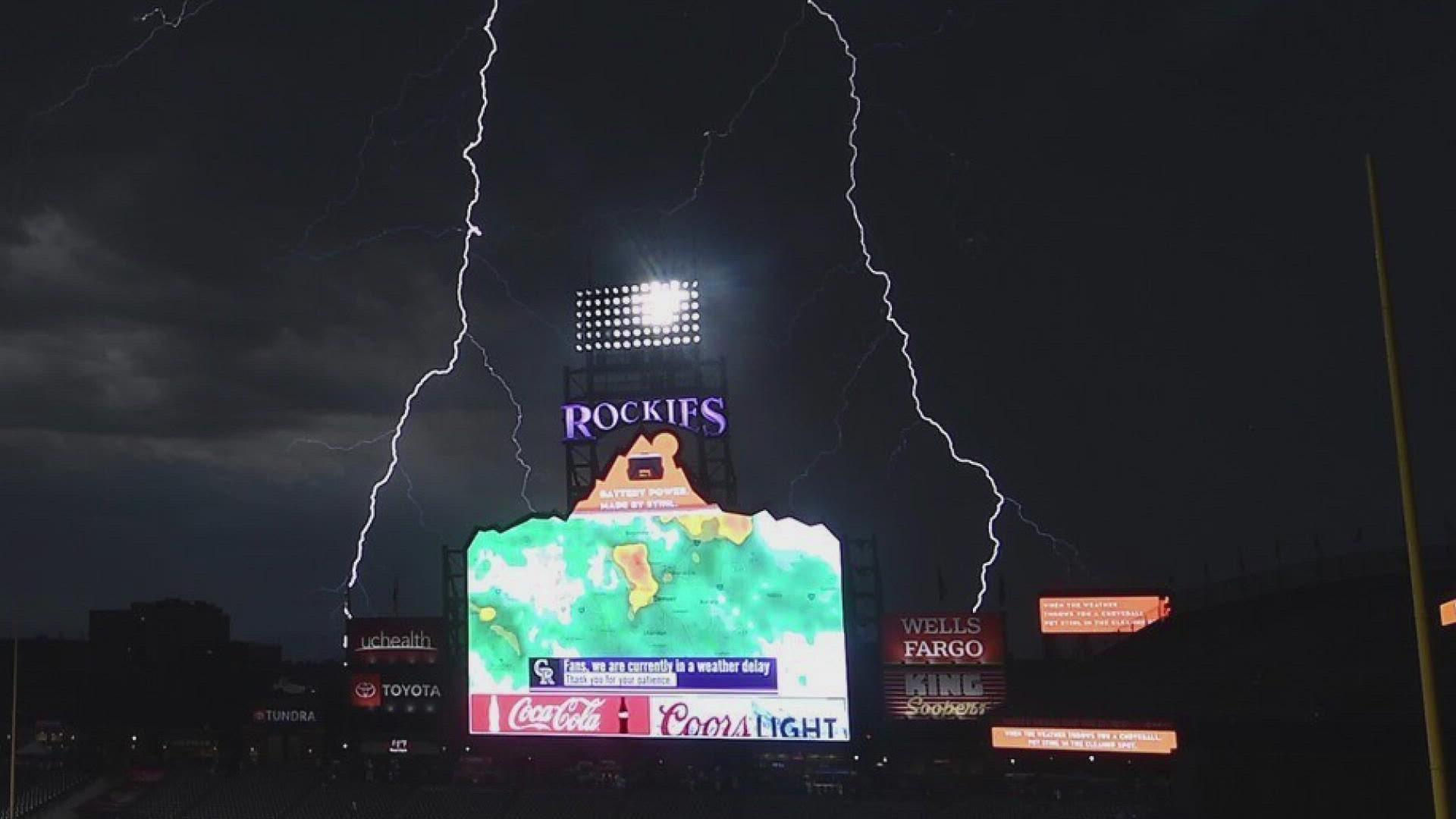LOUISVILLE, Colo. — Colorado has had the fourth-most lightning deaths since 1959 – that's partially due to how fast thunderstorms develop in our state, but our love for the outdoors is also a factor.
The core part of the lightning season is June through August. That is also the time of year that most people visit Rocky Mountain National Park (RMNP) or attend Rockies baseball games at Coors Field.
Reports from Vaisala, a weather company based in Louisville, Colorado, show that those two locations are some of the most lightning-prone locations in the country in their respective categories.
An average of 2.9 million people take part in America's pastime at Coors Field each summer. The Vaisala report showed that between 2016 and 2019, there were 49 Rockies home games that had a lightning strike within 8 miles of the baseball stadium.
And there were a total of 1,686 lightning individual lightning strikes in that radius during those 49 games – which makes Coors Field one of the most lightning-prone stadiums in Major League Baseball (MLB).
Vagasky used the data from the National Lightning Detection Network, which is run by Vaisala. It records 99.9% of all lightning strikes in America.
"And there was an average of one lightning strike in every 14 games played over that four-year study period," said Chris Vagasky, a lightning expert with Vaisala. "So that means on days that all the teams play, you can count on a lightning strike close by one of those games."
MLB has a total attendance of about 71 million people each season.
Social media is loaded with pictures and videos of lightning during MLB games, including the Rockies games at Coors Field. And it doesn’t always lead to a delay.
Vagasky said MLB seems more concerned about the rain stopping play, than the lightning which usually comes first.
"If the team doesn't have a lighting policy in place, it's up to the chief umpire to delay a game," said Vagasky. "They're usually pretty busy calling balls and strikes, and don't pay attention to lightning strikes until it starts raining."
He said don’t wait for the umpires to tell you it’s not safe.
“Dry doesn’t mean safe," he said. "You don’t have to be where it’s raining to be at risk of lightning. Lightning can strike 10 to 15 miles away from the storm.”
The National Weather Service generally recommends that outdoor sports activities go into delay procedures if lightning is detected 6-10 miles away from the event.
The National College Athletic Association (NCAA) has a strict policy where if lightning is detected within six miles of an event, an automatic 30-minute delay is put in place with the venue going into delay procedures for athletes and spectators.
It eliminates errors in judgment. Vagasky said he wants MLB to implement a similar procedure.
Vaisala also released a study that looked at national parks and found that RMNP is one of the most lighting-prone parks in the country.
There have been more than 54,000 lightning strikes over the last seven years. In 2014, two people were killed on Trail Ridge Road on two separate days.
Vagasky said one of those deaths came from the first bolt of the storm, so again don’t wait for the storm to fire a warning shot.
“Waiting for rain, or waiting until you hear that first roar of thunder to seek shelter is not a great plan," said he said. "Often when people are killed by lightning, it's one of the first strikes, or strikes just as the rain is letting up."
Vagasky said you can still see a lot from the parks inside the safety of a vehicle. A fully enclosed vehicle with the window closed is a very safe place to be during a lightning storm. So wait out that storm and then get back outside when it clears.
Five people have been killed by lightning across the country over the last two weeks, but there has not been a death in Colorado since 2020.
SUGGESTED VIDEOS: Severe Weather

